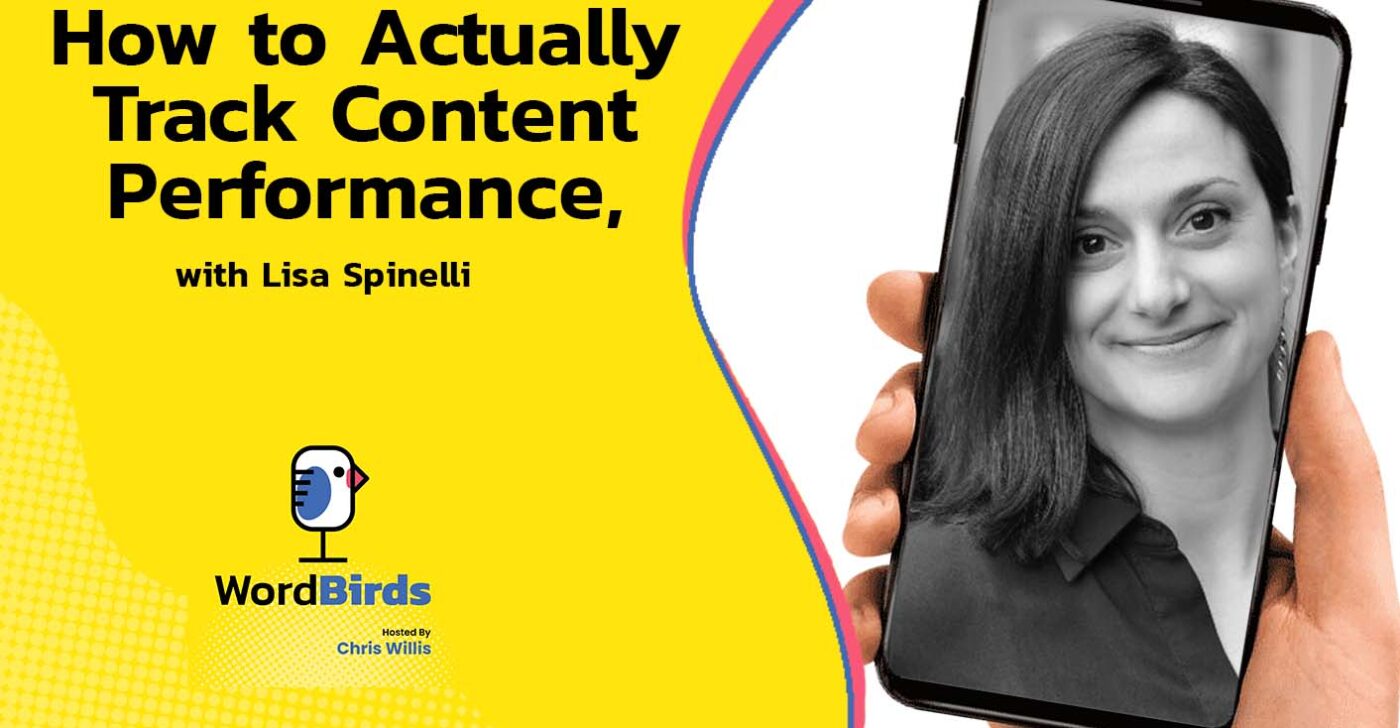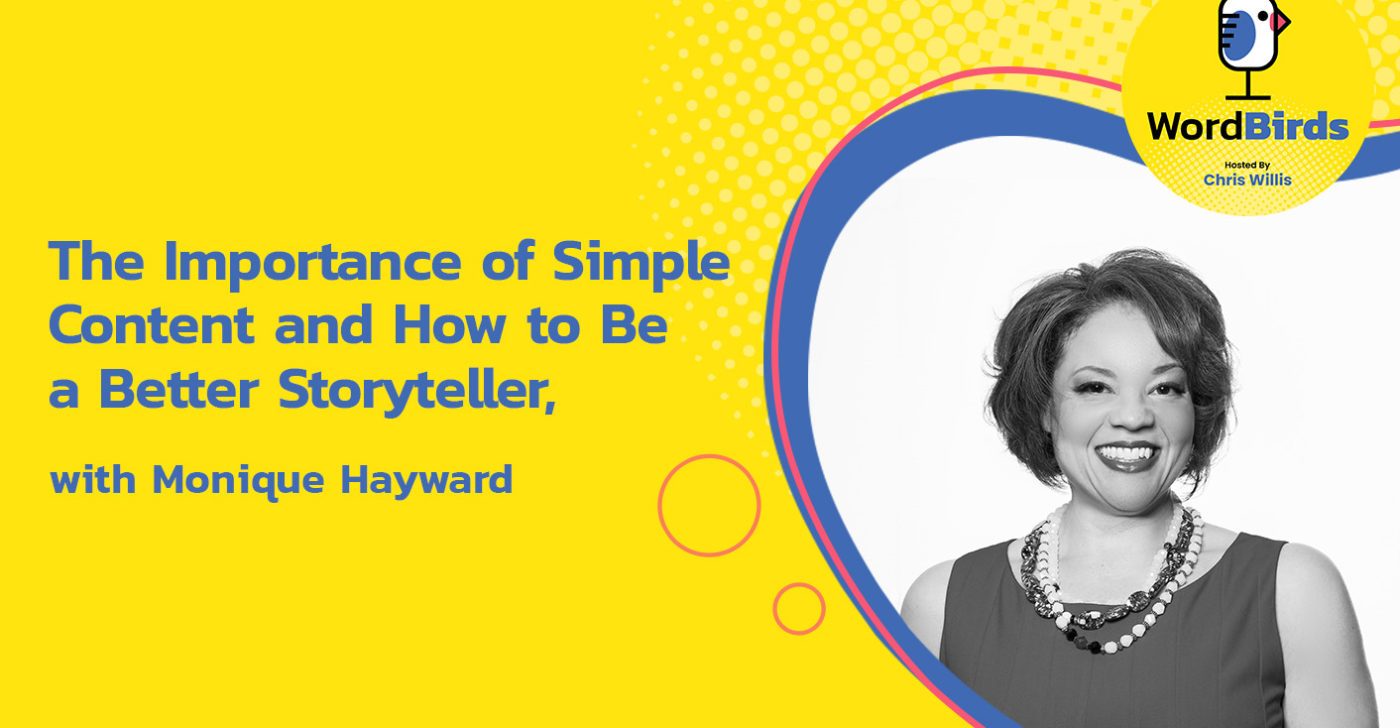The secret to content success at Wayfair is an ingenious content governance program built on a solid content audit system. Megan Nixon is very tied to content governance inside Wayfair as its Senior Content Strategy Manager for Content Operations & Governance.
In this episode, she shares what content governance means to her and how it plays out in practice in a large organization like Wayfair. She also talks about the content audit process, how it should be carried out, and why it is essential to content governance.
If you have an idea of the sheer volume of content Megan deals with in the day-to-day, you would appreciate the true value of the governance program she describes in this interview. Join in and learn how you can possibly apply this mechanism in your organization’s own content marketing strategy!
Watch the episode here
Listen to the podcast here
Read full episode transcript
In this episode, I have Megan Nixon. Megan is the Senior Content Strategy Manager at Wayfair. She focuses on content governance.
This is a topic that’s very close to me. I care a lot about content governance.
Megan and I have been emailing back and forth for about a year and a half. We have never spoken in person. You’re going to hear the first conversation we’ve ever had.
I’m excited. Let’s sit back and get some insight from the flock. Megan, it’s nice to have you on the show.
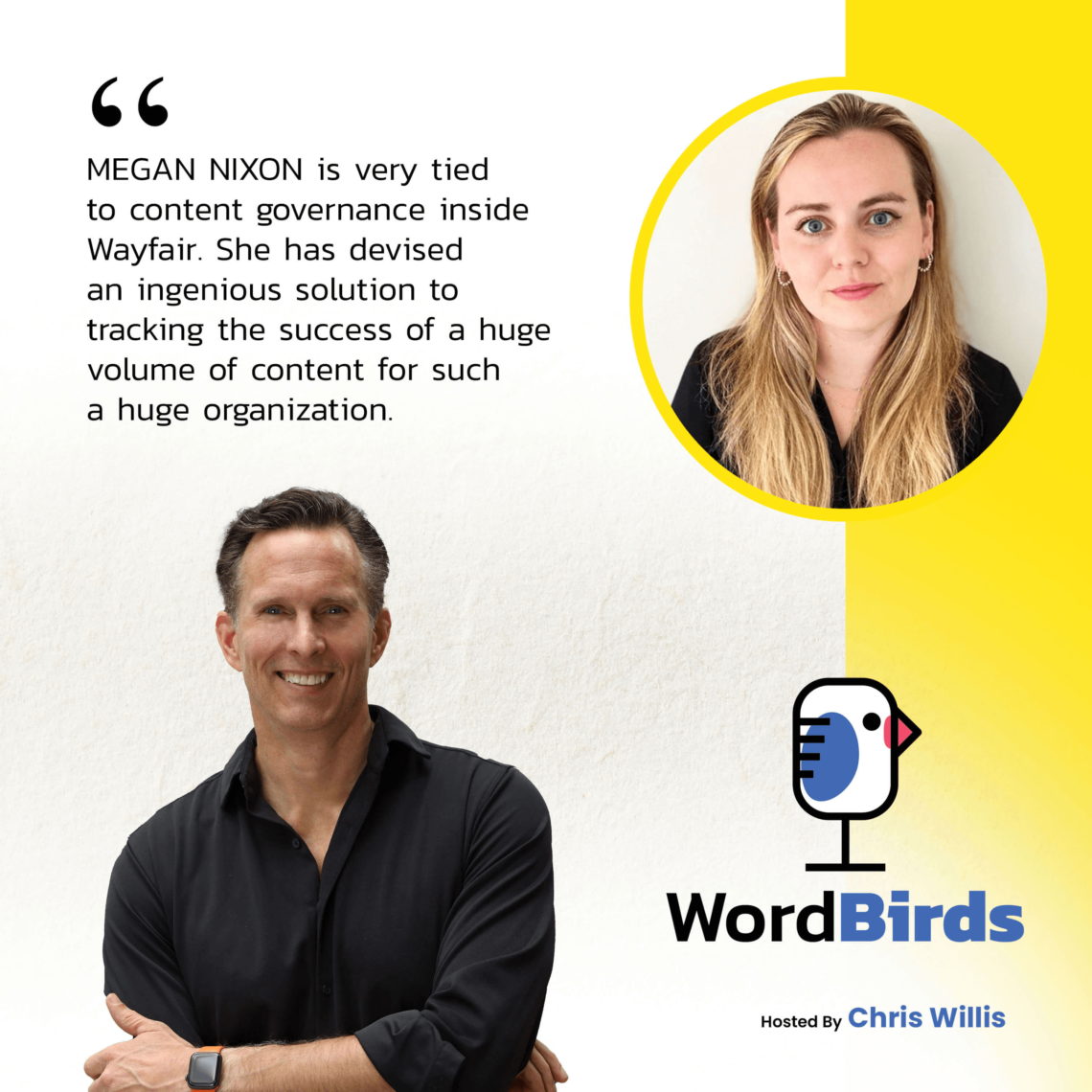
I’m excited to be here, Chris.
I think a great way to get started in this conversation is to understand a little bit of the backstory of Megan Nixon. How did you get to where you are now?
I started my career in sales and realized sending emails was my favorite part. It’s definitely not the cold calling. I was dreadful at that. The content marketing team at Upserve, where I started, brought me on board.
Since then, I’ve been in the content marketing world. I had the opportunity to work at CloudHealth before it was acquired by VMware, and then I moved over to Wayfair. It has been a very content-driven career so far and I love it.
It’s interesting that you say the thing about selling through emails. I feel the same way.
I love prospecting but I like email prospecting. I feel like I can get a lot more across in an email than if I catch you on the phone. I also am not a huge fan of having people hang up on me.
I had a lot of that and some cursing before, just to add a little spice. People are much less likely to curse you out over email. Some still do but it’s a lot more enjoyable.
It’s interesting that people would get that worked up about B2B communication but I guess they do. That’s fun.
Looking into how you describe what you do, you describe yourself as a data-driven content creation person. What does that mean? How do you define that?
I see content as a nice meeting point between data and creativity. You’re not just producing for the sake of producing something. You have a goal of what people need to know, and being able to be the one to offer them that self-service information so they can make a decision that’s best for them or their company. To have data drive your content, you need to understand what questions your customers are asking or your potential customers even further up in the funnel.
Content is a nice meeting point between data and creativity. You’re not just producing for the sake of producing something. You need to offer people self-service information so they can make a decision that’s best for them or their company.CLICK TO TWEET
Where are they scrolling on a page? Where are they stopping? Is that because they have their answer? Is that because they realize it’s the wrong space?
What are they clicking on? Is it bringing them to the right space? Are they opening up the emails? Are they scrolling down? Are they continuing on?
Having all that information on how they interact with your content provides more of what is performing. It’s not because it feels good or it’s your favorite thing to produce but because you’re completing the customer journey.
No customer journey now with the internet is linear. It’s very cyclical and it goes from top funnel, middle, back to top, maybe to the bottom, and then they find another competitor. It’s back to the top. It’s making sure that you’re not building it out in a way where they need to hit each part once, and making sure that you’re providing the correct information at each of those parts no matter how many times they revisit.
Essentially, it’s creating impact. It’s not just creating words for word’s sake but looking at what the business purpose is of the content, and then developing a process and strategy to be able to reach the expected impact.
It’s the business impact but also the customer impact. I think we get wrapped up in companies about, “We want to sell X amount. We want to increase revenue by X amount this half.”
You’re like, “The company cares about this.” It’s what your customers care about and how the company can help, and distilling it back to that customer or user focus.
That takes it one step away from the business impact but it has a bigger impact on the business than if you’re just driving based on company goals and not customer goals.
How do you measure that? How do you know it’s working?
At the end of the day, it’s working because we have a lot of organic-driven people within our system or closing customers that came to us organically. I think being able to provide people with information that they find on their own is a lot more powerful than just pushing it through and having someone already interested. That’s the power of content because it’s a very self-service field. They’re able to digest it on their own terms.
They’re able to find it out on their own terms and sign up for more on their own terms, especially with GDPR. That’s usually where I see success. It’s how they come to us and how many pieces of content they hit along the way, and if they feel comfortable at the end of the day signing on for the project. A lot of that comes from also talking to the sales team.
I love what you’re saying that there’s a measure at the end of it, and the measure is organic leads in terms of the process. Essentially, the way that you value the work that you do in content marketing is revenue.
Are you creating revenue through the content that you are building? That’s where you should be. It’s amazing. Megan and I have been communicating over LinkedIn for the better part of a year and a half about content governance.
Essentially, the communication has been scheduling a conversation that we have not had yet about content governance. Megan is very tied to content governance inside Wayfair.
I am very interested in talking about content governance, in general, all the time. We thought if we’re going to have a conversation, why not record it and put it on the internet, so here we are. From a content governance standpoint, what do you mean when you say content governance?
I’ve read a million things across the internet because, as a content person, you’re not doing your due diligence unless you’re reading way too much. They start to get a little confusing.
Content governance, in my terms, is owning your content and having the ability to edit, update, archive, publish and unpublished it, and eventually change it for the times, all within a structured set of guardrails. The guardrails change based on the piece of content but the idea is that all of those actions that you could take have to be incredibly limited. You’re not having multiple different voices and tones, stories, or anything else out there without very clear guidance.
The concept of governance is such a big world.
It’s transparency and process. It’s collaboration. There’s some automation in there. It’s about the language that you use and the way that you use that language.
Every company, in my experience, has a sense of what you’re talking about.
A lot of companies practice a passive approach towards governance. We like things. We know consistency matters. We know that there’s a right way to do things.
The assumption is that getting things right early in the process will save us time and money. The right content created the right way will generate more results for us, and we know that. That’s the end of that story.
We’re going to build content that we hope aspirationally meets some of those objectives.
How do you start building a governance model in your business? What do you build? Who’s involved in that process? How do you know you’re right?
I completely agree.
A lot of companies build out the guidelines, “This is our style guide. This is how you should be writing. This is the words that we do use or that we don’t use. This is how we publish,” and then anticipate people using that.
There are guidelines but there are no guardrails. It’s always the next step that I see companies not investing in. They’re like, “We have a style guide.” Do you have something in place, whether it’s a tool or a process, to make sure people are following that style guide or is it hoping for the best by giving them that?
As companies scale and get larger, you run into that a lot more. If there are two copywriters for the company, they live and breathe the style guide. Maybe they need it.
You’re not going to ever see the need for building out a governance program. At larger companies, you’re running into multiple different people writing for multiple different end users with site tweaks, and they completely understand their space more.
I believe content governance distills down to three things. You have the people, the process, and the tools. To have those three aspects fully set up is where you start.
You want to make sure that every single person that interacts with text is on board. It’s going to be way too many stakeholders in one room. It’s overwhelming.
I like to divide it into the people that do it and the people that let them do it. You have the leadership team where you have that conversational content governance and explain to them, “Your team is going to need to shift either their tooling or workflow. There need to be more stock gaps put in between. They’re going to need to approach a completely new team or check out this checklist.”
You’re going to have to ask them to give you some of their team’s time, and then talk to the people that are executing on content. You’re going to ask them to change their end part of the process completely.
They’re like, “I know the style guide. I’ve been writing for years.” You’re like, “That’s completely fine. We want to make sure as we evolve our language and tone that you’re able to keep it up to date.”
That’s a big thing with content governance. It’s about keeping your texts up to date, whether a stat changes, the industry changes, your voice and tone changes, or the way that you’re displaying your content changes.
The first thing on a company website or log or anything that falls through the crack is the older content. It’s being able to have that process that keeps them up to date. It’s the biggest thing for the stakeholders. It’s not just getting them to agree that it’s important, like you said.
Everyone will tell you content governance is important. Very rarely will they write off the back and give you the time to execute content governance.
A couple of things from what you said, one is we find the people that create the content. We bring them or their management into this process.
What I see in the world is that most businesses are not super excited about legislating the use of governance guidelines. It’s fine for this writer’s group. I’ve got this group here that creates this piece of content or this group of content and I can tell them what to do. I also have agencies that are creating content for me.
I also have contractors. I have other people or employees that come to work that create content. It is a byproduct of their workday, and they’re not going to use our process.
Now you end up with governed measurably good content aligned with your model. The package of content that is best is unknown.
From my visibility, that is a big problem for businesses because I’ve gone through the process of creating a governance model. I have some people that are using it that are creating phenomenal content. I have some people that don’t even know it exists that are feeding content into the same repository.
Do you see that in your businesses? Is that a problem that you’ve already addressed?
That’s a situation that we’re addressing because we do see it as well. You have the content creators and that’s their whole job. They’re focused on producing content and they’re incredibly skilled in that work.
There are people who the product of their job ends up being content. They could be engineers. They could be product owners. They could be something where that’s not where they put their energy and effort into, and those aren’t conversations they’re involved in.
That’s what I mean by the tool, as you said, a content repository. If people are putting text into a tool, there needs to be a content owner. That’s an incredibly difficult conversation I’m finding out.
People want to produce their content and they understand the value of it but they don’t want to own it. They don’t want to be responsible for going through the checklist and checking in on it every six months, but that’s just the responsibility of producing content.
It’s either the person that’s creating it has to have a conversation with someone who is a content strategist, learn what owning their content is like, and be on the hook with their name attached, or it’s handed off to someone on the team who is already the content strategist or the content owner.
There’s a very clear handoff where the person who produced the content gives up responsibility. That way, they can’t go into the system and change things as they think about them or update them.
They have to communicate directly with the person who now owns it. That is incredibly taxing on content strategists. That’s adding more than they’re already producing and working on to now have responsibility for these subject matter experts, text that they necessarily didn’t produce, or it’s a thought piece that they don’t own.
It’s the only way to make sure because once something is in your content repository, it’s either owned or it’s gone. Someone might forget it’s there if they don’t own it. You can’t keep track of thousands of pieces unless it’s divided across people. The big challenge is making sure you cut it off before it gets to that point.
I agree. In my conversations with content organizations in some of the bigger companies out there in the world, when you talk about the content as an asset in the business and look at what they own, how much of it there is in their business, and how much they maintain, the maintenance number is generally when they estimate 10%. They’re maintaining 10% of the content that lives in their content repositories.
That’s cool. We got 10% of your content that’s usable. The problem is that 100% of it is available to be used. That means 90% of your content is potentially bad, dangerous, risk-filled, out of compliance regulatory, and against regulations.
Any number of things could live in the 90% because you don’t have an owner for that content. Nobody is thinking about the fact that a salesperson could reach in and grab it and send it to a customer, or it could get pulled up back onto the website or worse, it’s already on the website. Probably it’s already on the website.
Google probably indexed it high for some reason. If people search for your company, that’s what’s most likely going to come up.
Every single time, then you see it. You’re like, “I wish that wouldn’t come up so much.” Because nobody owns it, in most cases, who changes it until there’s a major rev of your website and you shift? Through this type of model, you’re dealing with all of these different people inside the business and a governance model that is probably hierarchical.
There are rules at the top that fold down into different silos, different groups, and different approaches to content. There’s a lot to organize. How do you make this stick? How do you get people to follow this on a day-to-day basis so that from the day that you start going forward, you are creating what you would define as usable valuable content?
Ideally, a company starts and has a content governance plan as they first make their first piece of content on their website and that’s never it. It’s usually after there are a million different things in the company. There is all this ungoverned content.
What needs to happen and what gets you the most pushback from stakeholders is a content audit.
It’s not sexy. It’s not fun. It’s time-consuming. Unless you’re in the content world, it’s hard to understand the value.
Most companies have some structure. The companies I’ve been at have been incredibly matrixed. There’s someone that owns a product. There’s someone that owns a certain webpage.
It’s very clear ownership once it’s live, but is the person who owns the product that’s on the homepage the actual owner of the text or is it the homepage owner that owns the text because it lives on the homepage?
The first step is breaking down and having these teams do an audit of all the registry content across all the websites that it touches if you’re a registry team. If you’re a homepage owner, do an audit of all the texts in every single homepage or landing page or anything else within your scope. That usually is the most time-consuming piece of content governance or putting a plan in place because you find a lot more content than you’re banking on.
You know the basic stuff in your head if you’re working within it saying, “Is this translated somewhere? Who translated that? Who is keeping the translation?
What’s the actual source content? Is it for different brands? Do we have it slightly different, even if it’s in English for different geos?”
You start picking and unraveling that because translation, localization, branding, and different visualizations of the same text all fall under content ownership and content management.
It may be the same text where it’s slightly different. There might be different owners. Once you have that audit, it’s then identifying every single piece connected to a person.
And even more than a person because unfortunately, we’ve seen a lot of brain drain across the tech industry within the past few years with COVID where people leave companies. There’s a great resignation across all the tech spaces. People are joining new companies.
You can’t say, “Nix owns this piece of content,” because if I went somewhere, “Who is Nix? Why do they own it?” You say, “The senior whatever of this place owns this content.”
That way it goes past the people and more into part of the role, and eventually into the job description. That’s what you want. You want it to be part of people’s day-to-day job to maintain their content even if they’re not content strategists.
It should be part of people’s day-to-day job to maintain their content even if they’re not a content strategist.CLICK TO TWEET
A word to scale if you’re tuning in to this and you don’t understand the volume of content that Megan deals with, I would guess it’s hundreds of thousands of category landing pages and millions of pages of product across your website. You own some of the content but to your point, some of the content is coming directly from the manufacturer or the vendor selling to your site. You got a puzzle that you deal with every day. You’re never going to not be busy.
I love puzzles, but it’s a puzzle that doesn’t have a correct answer. You have multiple answers and one might be the right answer for now but it might not be the right answer ten years from now.
Finding that middle ground of a solution is what I spend a lot of my time doing. You don’t want to solve something, then revisit it in six months. That’s not a good use of anyone’s time. I don’t know what it is but time goes by wicked fast.
You’re like, “In six months, I’m just going to restart it once I finish.” You also don’t want to build something too large that’s not actionable for now. Finding something that could grow but won’t need to be revisited too often is the real trick of content governance.
You want it to be disciplined and detailed enough for the day-to-day use cases, but you don’t want to have to shift and roll out in completely new process to all these people that you got on board if something changes if you add a new language or a new way that you’re delivering your content. It’s incredibly tricky but that’s probably my favorite part of my job.
It’s a great place to be when you can enjoy the scope of this puzzle that you have in front of you. Thinking about my own process here when I got to my current company, like many people in a CMO role, I wanted to put my stamp on the way that we create content. I built out our strategic guidelines on how we want to communicate our tone of voice, our clarity, consistency and character.
I modeled it after a combination of me, my voice, and our founder, the product inventor. It’s this composite of science and me, the liberal arts space type person. It was quirky and fun. It worked.
We rolled it out in all of our new content to our sales and marketing audience. It killed it. They liked what they heard. The way that they heard it, we were creating engagement.
Being me, I said, “Who else is creating content here? I want everybody to use this. This is amazing.” This is the learning part.
They said, “Support creates a lot of content. They create a lot of support tickets.” “Fantastic. Folks, use the implementation of our product, provide all the guidelines and go,” and off they went and leveraged my guidelines.
Do you know who doesn’t think I’m cute and funny? The support customers. They don’t think so at all.
They want consistency and clarity. They want managed terminology. They want a simple answer to a problem that they have so they can quickly fix it and move forward.
The idea of company-wide customer touchpoint experience management didn’t work for us because one voice isn’t enough. It works in one place, but it doesn’t work in another.
That’s where I talk about the hierarchal model.
At the top of it, we all spell the name of the company right. That’s the first rule. If you can roll down from there, there are ways to handle sales and marketing communications. They inherit from that top level.
There are ways to handle support. They inherit from that top level, but we’re all slightly different. That was an interesting thing to learn.
The crazy part of it was the immediate reaction from our support team, “You’re doing it wrong and you’re killing us.” Everybody is mad and I think they’re mad at you.
I love to hear that. It’s motivational and encouraging.
It’s time to get better. Staying in the crazy theme, you’ve been doing this for a while now at a very big company. What’s the craziest thing you’ve seen in terms of creating and following the governance model that you’ve built?
The craziest thing I’ve seen, and I’ve seen it at a few companies I’ve been at, is when you join and you start this governance model, you might have a few things that fall through the crack.
Maybe a few people have more access than they should. Waking up and going on to the website when you started your work day and seeing that someone had access to upload something to the website. They spelled something wrong or it wasn’t supposed to go live. I’ve seen that more times than I want to admit.
It’s never them. It lands on me. At the end of the day, I’m the gatekeeper, unfortunately. I’m getting blown up over Slack and emails, “How did this go live?”
Once someone spelled the name of the company wrong on the website. It’s things like that where you’re like, “I thought I restricted access to everyone very specifically and did all my training. I must have missed someone that had access.”
No matter how many times I start over building governance at companies for content, that always happens. It’s always something where it’s like, “How did you get in there?”
You have to talk to them and be like, “Why did you do that? Why are you in there?” They’re like, “It’s what I usually do. It’s the first time you caught it.”
That thing keeps me up at night. That’s where I’m like, “Go do better next time,” then the next time, something always falls through the cracks.
That’s where at this point, you have to realize that governance is a lot of failing. In building out a content governance plan, you have to fail to understand your voice and tone. If you put things out and they’re a “success” all the time, then no one is actually using them because I could not predict how support is going to interact with people. I can’t predict how engineering is going to get on the website.
You’re a human. You’re not a robot, thank goodness. You’re going to run into situations and that’s how you build the best governance plan. It’s by failing and having mistakes, then readjusting to make it an actual livable system.
If you’re not rubbing people the wrong way or changing things up as you’re building out these new processes, you’re either not changing enough or no one is following it. Both of those are a waste of your time.
I love what you’re saying because I feel like we’ve created a world where if you start with a strategy to drive your guidelines, that strategy is driven internally for the most part.
It’s people like you and me that have this as a job. We should know how to communicate. We should know the clarity, consistency, and character of the content that we roll out. We build this model.
At the end of our part of this, we have something that is able to be measured as good as quality content. We put it out in the world.
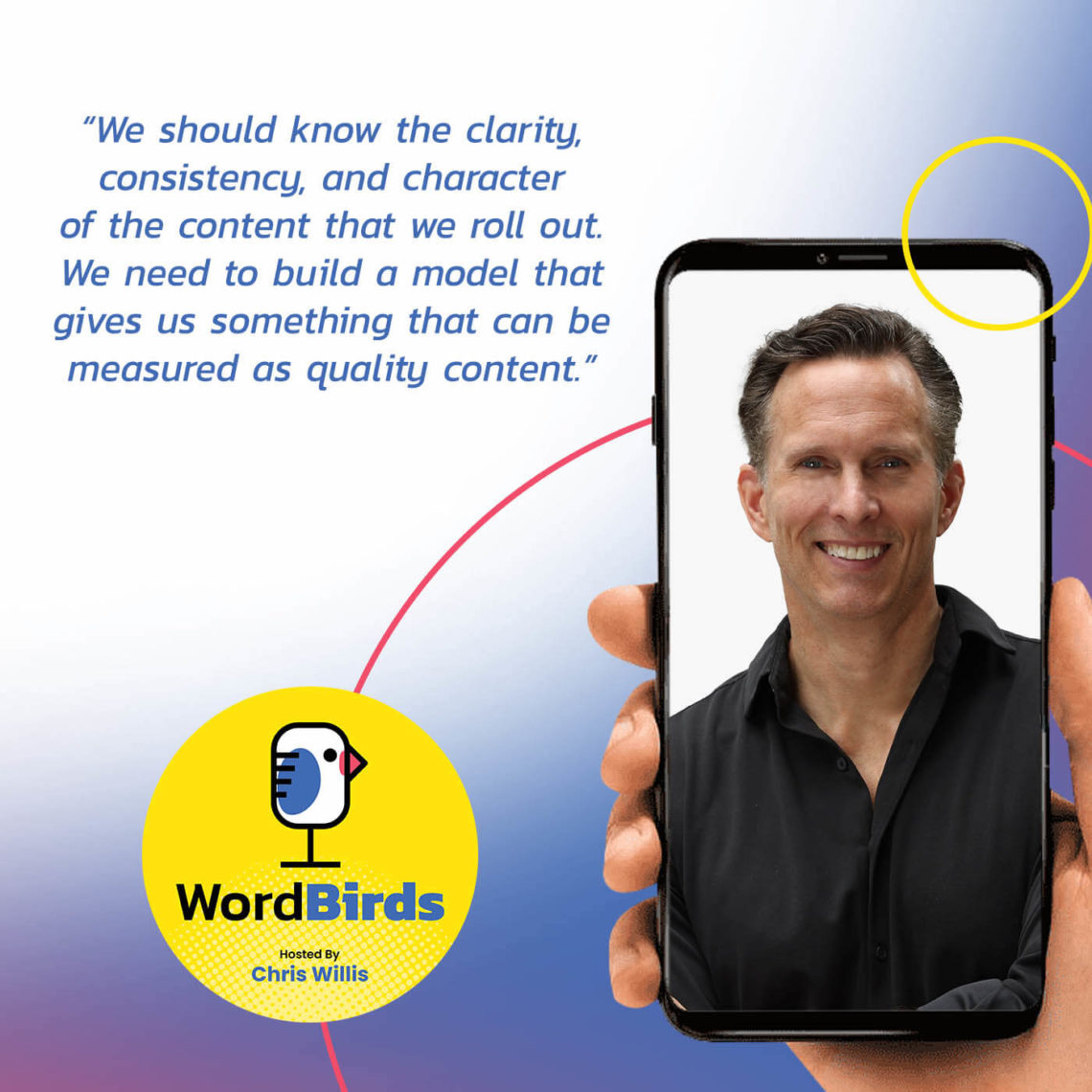
That’s where things get interesting though because we did this. Internally, we created this. The world is going to be the judge of how this content resonates and the relationship that we build.
I’m so interested in my business and life, in general, to moving from strategy alignment to audience alignment and letting the audience be informed. The way that you’re saying it is slightly different, but you’re saying the same thing. You’re talking about failing.
I have a great piece of content. I put it out in the world and it doesn’t perform.
What do I do now? Do I say that everything is broken or do I take away from it? Why is it not performing? What can I learn from the lack of performance to help inform the process?
I build that back into the strategy so that I’m constantly getting closer to creating content that engages the audience the way the audience wants to be engaged. At the end of the day, our primary touch point now with our audiences is through the written word. I got to get this right if I want to be competitive on a global scale.
I would never say that a piece of content that you roll out that has a purpose within the company not getting the impressions or the interactions with the end users as a failure. That is hard to go from a content position and bring that to upper leadership or bring that back to your team and say, “No one cared about this,” whether it’s a landing page, email or blog. Usually, it’s blogs. Those are a lot easier to roll out and test new things.
If I have something I’m not sure is going to be a hit, I usually put it as a blog because you could send that out in multiple different ways. People could find it organically. You have a lot more grace in that space.
If you think it’s so important and there’s a reason why you think it’s so important for the company to put company time and energy into producing, then it’s a message that people need to hear.
It might not be that something is wrong with the message. It might be its format.
Maybe it should have been a video or a webinar. It could have been a new book. Maybe you need to be sent out an email or it needs to be handed from sales directly to the customer.
You have to have the right content strategy. By right, I mean you’re already listening to what your customers are interested in by what they’re searching, where they’re landing on your website, and how they’re asking questions as customers to customer support and asking questions to sales as prospects.
The real challenge with content is the delivery. They might not be asking that, but they might need to have that information to make a decision on if they’re going to buy your service.
They might not be asking that until they have your service. They’re like, “I have now more time because you saved me time to focus on the granularity of this work. I never once considered this, and now I have the ability to.”
It’s unwrapping that. If something is a bust like you think it’s going to be the hottest new thing in your space and you write an article about it and no one cares, that does happen too, but that shouldn’t happen too much. That only happens if you’re thinking about yourself and not about your customer.
If you’re only thinking about yourself and what you think would be nice to write about and what you think would be great for your portfolio, then you’re in the wrong industry.
I’ve never once been in a field where I was born and wanted to be. I wanted to be an Egyptologist when I grew up. I’m not writing about hieroglyphics. I’m not out here doing that.
You have to focus on who you’re selling to. It all goes back to that.
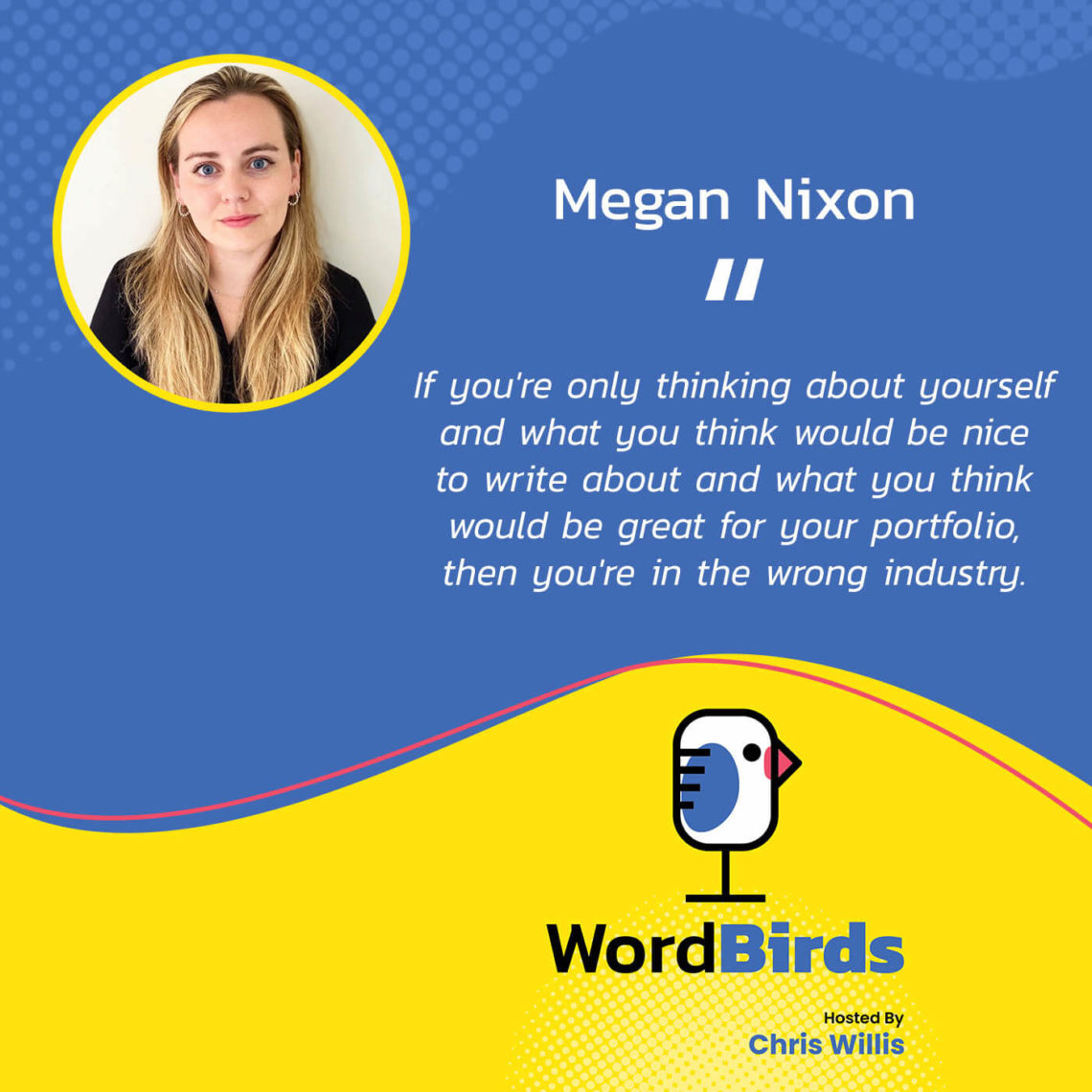
Have you been to Egypt?
No, it’s on my bucket list.
We can travel again. It’s time. To bring us to the finish line here and for some guidance to people that want to implement this in their business at a very high level, I would love to understand how would somebody in the content space even start with content governance.
I’m always going to say content audit. You can’t figure out what your governance plan will be unless you figure out what your content is. Unless you have a content audit or a very clearly implemented content management system where you could easily audit your work, you have no baseline. Once you have that audit, the next big step is making sure that you’re bringing the stakeholders into the conversation.
You could have all these processes and tools, but if you don’t have actual people buying into it, then it’s not going to get the time of day on the roadmaps. It’s not going to be able to land into current systems. It’s not going to be something that has an impact.
Governance can’t be created in a back room. It has to be the front center of everyone’s mind as they’re interacting with however we communicate with customers or internal employees.
Governance can’t be created in a back room. It has to be the front center of everyone’s mind as they’re interacting with customers or internal employees.CLICK TO TWEET
The last thing is making sure that you have the tooling. If you have multiple different writers across the company, you’ll need a certain type of tool. If you only have three, you’ll need a different type of tech stack. It’s making sure that you’re giving the people who are going to do the work, the right tooling, they have the stakeholder buy-in, and then they’re able to know what techs they’re working with and the processes to build out of that.
That’s where you start. It’s understanding those three pillars and then going from there. It’s different. Once you get those done, it’s different for every single company on where you’re going to spend your time, energy and money.
If people wanted to continue this conversation with you, where can they find you?
You could look me up on LinkedIn, Megan Nixon. I like my profile picture on there, so I think it looks like how I do now, a little bit blonder but it works.
Megan, thank you for being on the show. This was amazing. It was super actionable. This is going to be exciting for people.
I would have to imagine that you’re going to be back. There’s so much more to talk about. Thank you very much for your time.
Thank you. This was a blast.
Important Links
About Megan Nixon

Megan is a senior content strategy manager, growing the content operations team at Wayfair. An experienced content marketer with a demonstrated history of building content programs from the ground up. As an incredibly organized, creative, and thorough marketing professional, she drives results through data-driven content creation.

